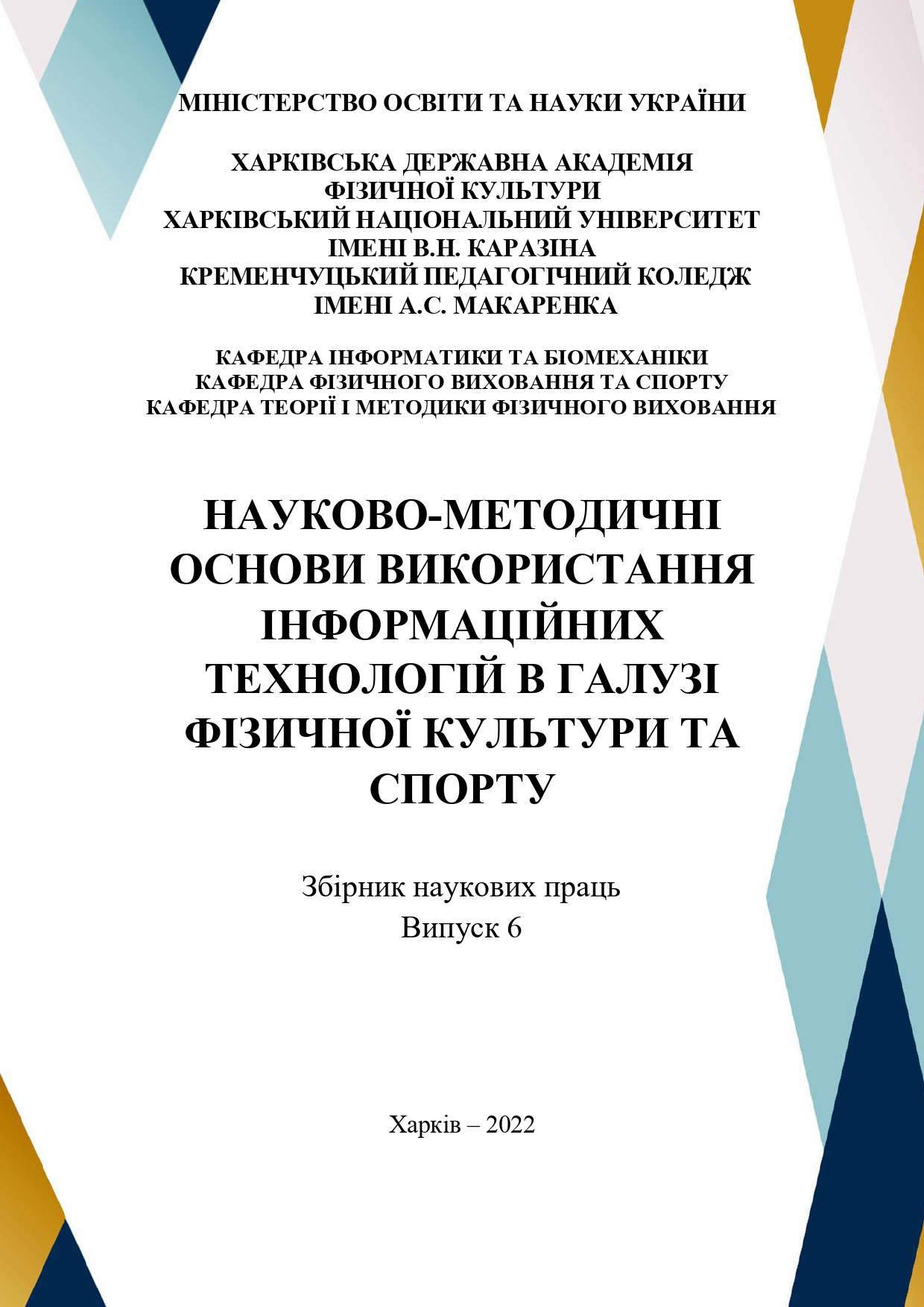РОЗВИТОК СПРИТНОСТІ ТА КОГНІТИВНИХ ЗДІБНОСТЕЙ ДЛЯ БАДМІНТОНІСТІВ ЗА ДОПОМОГОЮ КОМП'ЮТЕРНИХ ІГОР
Анотація
Робота спрямована на пошук альтернативних шляхів розвитку здібностей гравця у бадмінтон. Розглядаються дослідження впливу відеоігор, на розвиток уважності, спритності та когнітивних функцій. Наводяться рекомендації щодо застосування можливостей відеоігор на додаток до стандартних тренувань спортсмена.
Посилання
Kloos, A., Fritz, N., Kostyk, S., Young, G., &Kegelmeyer, D.(2013). «Video game play (Dance Dance Revolution) as a potential exercise therapy in Huntington’s disease: a controlled clinical trial». Clinical Rehabilitation, 27 (11), 972-982.
Chisholm, J.D., Hickey, C., Theeuwes, J. & Kingstone, A. (2010).«Reduced attentional capture in action video games players». Attention, Perception & Psychophysics, 72, pp. 667-671.
Clemenson,G., Craig, E., & Stark, L. (2015).«Virtual Environmental Enrichment through Video Games Improves Hippocampal-Associated Memory». Journal of Neuroscience,35 (49), pp. 16116-16125.
Diankun, G., Hui, H., Dongbo, L., Weiyi, M., Li, D., Cheng, L.,& Dezhong, Y. (2015). «Enhanced functional connectivity and increased gray matter volume of insula related to action video game playing». Scientific Reports 5, Article number: 9763, pp. 1-7. DOI:10.1038/srep09763.
Green, C.S. & Bavelier, D. (2007) «Action-video-game experience alters the spatial resolution of vision». Psychological Science, 18, pp. 88-94.
Kuhn, S., Gleich, T., Lorenz, R., Lindenberger, U. & Gallinat, J. (2013) «Playing Super Mario induces structural brain plasticity: gray matter changes resulting from training with a commercial video game». Molecular Psychiatry, 19, pp. 265-271.
Anguera, J. et al. (2019) «Video game training enhances cognitive control in older adults». Nature, 501, pp. 97-101.
##submission.downloads##
Опубліковано
Номер
Розділ
Ліцензія
Автори, які публікуються у цьому журналі, погоджуються з наступними умовами:- Автори залишають за собою право на авторство своєї роботи та передають журналу право першої публікації цієї роботи на умовах ліцензії Creative Commons Attribution License, котра дозволяє іншим особам вільно розповсюджувати опубліковану роботу з обов'язковим посиланням на авторів оригінальної роботи та першу публікацію роботи у цьому журналі.
- Автори мають право укладати самостійні додаткові угоди щодо неексклюзивного розповсюдження роботи у тому вигляді, в якому вона була опублікована цим журналом (наприклад, розміщувати роботу в електронному сховищі установи або публікувати у складі монографії), за умови збереження посилання на першу публікацію роботи у цьому журналі.
- Політика журналу дозволяє і заохочує розміщення авторами в мережі Інтернет (наприклад, у сховищах установ або на особистих веб-сайтах) рукопису роботи, як до подання цього рукопису до редакції, так і під час його редакційного опрацювання, оскільки це сприяє виникненню продуктивної наукової дискусії та позитивно позначається на оперативності та динаміці цитування опублікованої роботи (див. The Effect of Open Access).

